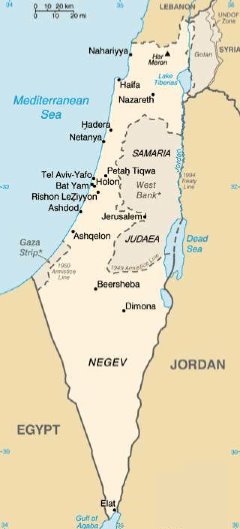Primer on the Arab/Israeli Conflict
Modern day Israel became the focus of national aspirations for both Jews and Arabs. Jews had maintained a presence in the area for several millennia, including after the fall of the Second Temple in 70 C.E.1 At least some of the Arab Palestinians are believed to be descendants of the ancient Canaanite and Philistines, the earlier of which entered the land around 3000 B.C.E.2
As pogroms--or anti-Jewish riots--hit the communities of Eastern Europe in the late 1800's, Jews began immigrating to the area, then under Ottoman rule.3 Shortly thereafter, following a show trial convicting a Jew of espionage (which later would be overturned) in Paris and subsequent anti-Semitic outbursts, Theodore Herzl, known as the founder of modern Zionism, wrote a book called The Jewish State.4 His book advocated a home in Palestine where the Jews could be autonomous in their own state.
More Jews began immigrating to the land in hope of turning Herzl’s dream into a reality. As World War I broke out, the Allied Powers wanted both Jewish and Arab support in order to defeat the Ottoman Empire and its allies. The British in the Balfour Declaration promised the Jews a homeland in Palestine5 and the British and French in the Sykes-Picot Agreement concluded that there would be an Arab state6.
The Allied Power victory in the war brought about the downfall of the Ottoman Empire, and in 1924 the British gained oversight of Palestine in what was known as the British Mandate.7 As Arab countries were gaining independence all around them, and the Jewish population growing, the Arabs of Palestine began to demand their own state with a distinct Arab Palestinian identity.8
Update 4/28/09
I am now an attorney at Richard J. Mockler, P.A. Visit us on the web at http://www.FamilyLawRights.com
----
1 Adam Garfinkle, Politics and Society in Modern Israel 25 (2d ed., M.E. Sharpe, Inc. 2000).
2 Mark Tessler, A History of the Israeli-Palestinian Conflict 69 (Ind. Univ. Press 1994).
3 Garfinkle at 35.
4 Id. at 38-39.
5 Arthur James Balfour, The Balfour Declaration (Nov. 2, 1917) reprinted in The Israel-Arab Reader 16 (Walter Laqueur & Barry Rubin eds., 5th rev. & upd. ed., Penguin Group 1995).
6 Sir Mark Sykes & Charles Georges-Picot, The Sykes-Picot Agreement (May 15-16, 1916) reprinted in The Israel-Arab Reader 11.
7 Garfinkle at 46.
8 Baruch Kimmerling & Joel S. Migdal, Palestinians: The Making of a People 53 (The Free Press 1994).


